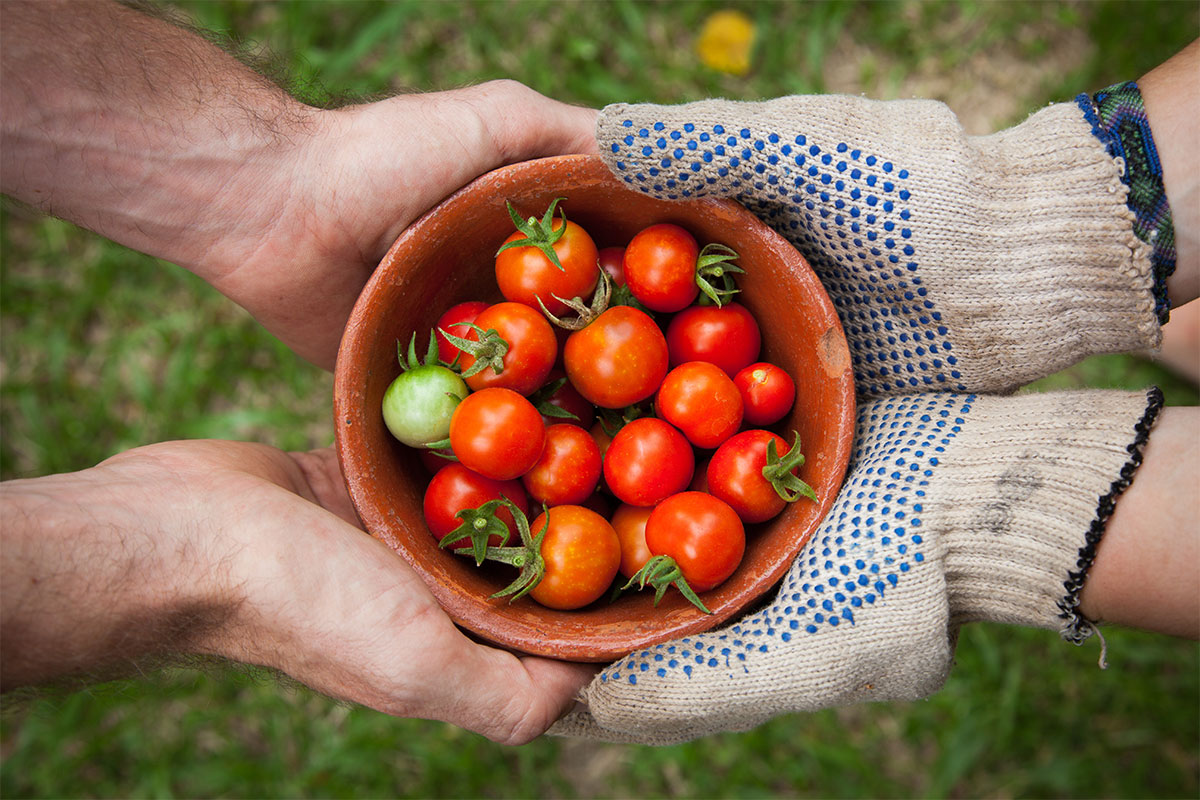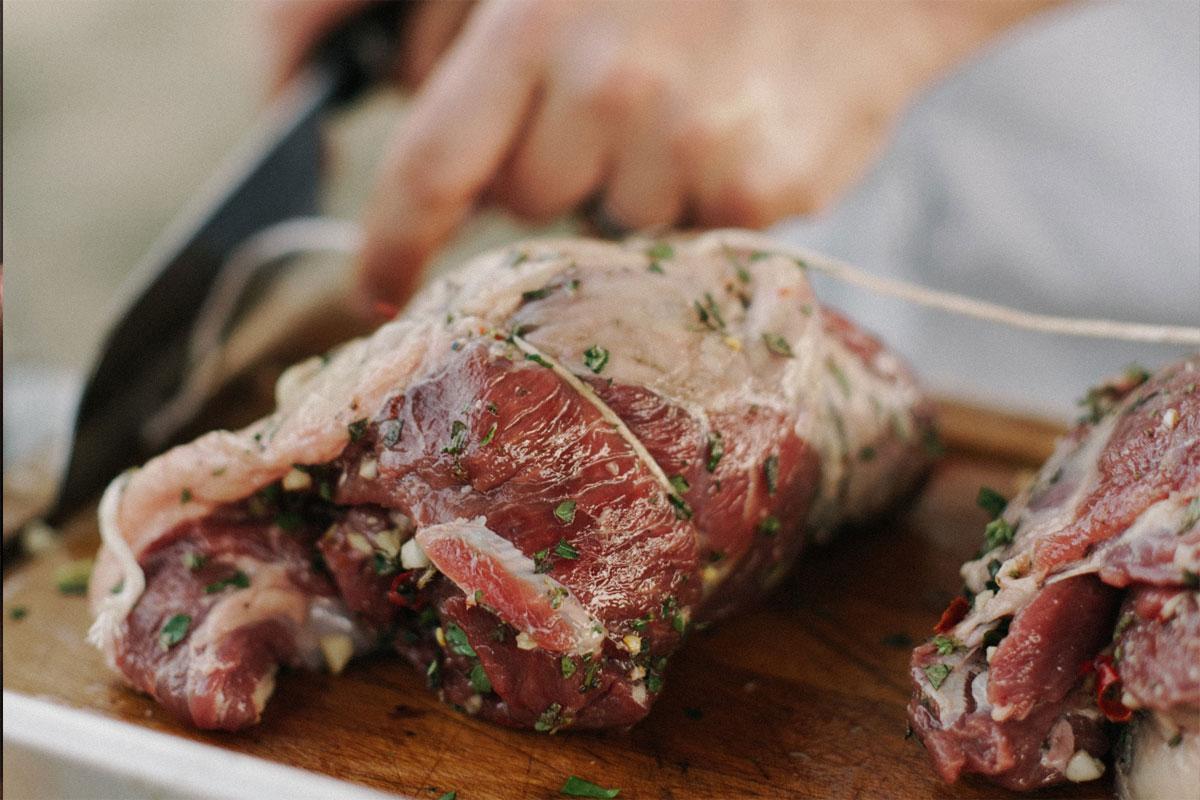Are you hungry for a more eco-conscience way of eating? You’re not alone! As awareness about food production and climate change grows, the climatarian diet is gaining momentum. Joining the climatarian movement can be a positive lifestyle change that keeps you more informed about your food—from farm to fork.
What is the climatarian diet?

The climatarian diet is a lifestyle choice that goes beyond simply plant-based eating to focus on seasonal, locally sourced, and minimally processed foods. It includes a low intake of animal products and encourages environmentally conscious shopping practices. Food products that have the lowest carbon footprint and can be produced with the least waste are the most climatarian friendly.
Our food system alone creates 26 to 34 percent of the world’s greenhouse gas emissions. Fans of the climatarian diet report that this eco-friendly way of eating has the potential to lower greenhouse gas emissions from food production by up to 84 percent in high-income nations.
Foods included in the climatarian diet

Although the climatarian diet encourages plant-forward eating, it does not involve eliminating animal products from your meals completely. According to climatarian connoisseurs, the diet simply shifts your intake of high-emission foods to lower-emission alternatives. For example, switching just 10 percent of your daily calorie intake from beef and processed meat to fruit, vegetables, nuts, legumes, and certain types of seafood can help reduce your dietary carbon footprint by 33 percent.
A climatarian-friendly meal plan can include
- seasonal fruit and veggies, grown locally
- whole grains, legumes, nuts, seeds, and other locally grown plant foods
- pork and poultry, raised locally with high welfare
- sustainable fish, eaten in moderation
- dairy products, eaten in moderation
- eggs, eaten in moderation
Foods to avoid on the climatarian diet

Like most specialty diets, there are certain foods that climatarians avoid. Overall, the ingredients considered non-climatarian are high contributors to greenhouse gas emissions—with beef topping the list.
A climatarian menu will typically not include
- beef, lamb, and goat
- Red List fish and seafood harvested using unsustainable fishing practices
- food transported by air
- plant-based food grown in heated greenhouses
- highly processed food
Because raising meat-producing animals uses more land than plant-based alternatives, they tend to place more stress on the environment. A climatarian diet encourages lowering your overall intake of animal products (including items on the climatarian menu). Even cutting your intake of meat and dairy to one meal per day can have a big impact on your carbon footprint.
The pros of a climatarian diet
Making sustainable choices feels good! The perks of climate-conscious eating are compelling.
A smaller ecological footprint
Climatarian eating can lower your contribution to greenhouse gas emissions generated from making and transporting food.
Improved health
Diets that are powered by whole, plant-based foods are fantastic for managing body weight and lowering the risk of chronic illness, such as heart disease and diabetes.
More nutrient-dense produce
Prioritizing locally grown, seasonal produce helps avoid lengthy storage and transport conditions that can degrade nutrition. Studies have shown that raw spinach and broccoli can lose 29 percent of their vitamin C within just 24 hours of refrigerated storage.
A stronger local economy
Buying locally produced food supports the growers and businesses in your community. It helps build food security and a connection with the people who put food on your table.
Lower food costs
Studies show that sustainable diets (including vegan, vegetarian, and flexitarian) cost as much as 34 percent less than standard diets.
The cons of a climatarian diet
Habits can be hard to change—especially when it comes to what you eat. Prepare to face some challenges when shifting to a climatarian lifestyle.
Limited produce options
Prioritizing seasonal, locally grown food can limit the variety of fruits and vegetables at hand—especially in the winter. In other words, if your go-to breakfast includes strawberries, be prepared to freeze extra when they are in season.
More time shopping
It is difficult to pinpoint which foods are the most climatarian friendly without some background research. A conscientious climatarian needs to learn about the food system and shop around to find suitable items.
Milder flavors
Eating a climatarian diet often means swapping out herbs and other ingredients from your favorite dishes with those available locally or seasonally—potentially sacrificing flavor.
Less meat
People who rely on meat to keep their protein, iron, vitamin B12, and other nutrients up can find it challenging to get enough of these key nutrients through a plant-based diet. Supplements can help provide nutritional insurance.
Socially isolating
Attending a dinner party or lunching with friends can be challenging with dietary restrictions. Some climatarians find the diet hard on their social life.
A gradual shift to the climatarian diet
Making the switch to a climatarian diet can be an exciting and rewarding journey. If it sounds too overwhelming, try taking a moderate approach by gradually incorporating more sustainable practices into your grocery shopping and meals.





